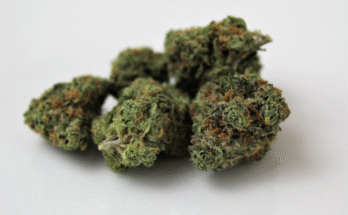This article has been sponsored by our friends at Ice Head Shop, the UK’s one-stop shop for all your smoking, vaping and CBD needs. Please check them out and show some love.
The endocannabinoid system (ECS) is a remarkable and somewhat mysterious bodily system.
Considering that it’s critical for almost every aspect of our moment-to-moment functioning, it’s surprising that most people haven’t heard of it, and pretty shocking that most doctors know very little about it.
The ECS regulates and controls many of our most critical bodily functions such as learning and memory, emotional processing, sleep, temperature control, pain control, inflammatory and immune responses, reproductive processes, appetite and digestion.
Which is why it’s currently the focus of renewed research on drug development around the globe.
What is the ECS?
The ECS is made up of a vast network of receptors and signalling chemicals that are densely packed throughout our brains and bodies.
In the brain, we find a high number of cannabinoid receptors known as CB1 receptors. These act like traffic controllers by regulating the levels and activity of many neurotransmitters.
CB2 receptors are mostly located in our immune tissues and they help regfulate our immune system, including inflammation levels.
In order to activate these receptors, our bodies produce molecules called endocannabinoids (endo meaning ‘within’). They have a similar structure to cannabinoids such as THC and CBD that ar produced by the cannabis plant.
The first endocannabinoid to be discovered was named anandamide after the Sanskrit word ananda, which means ‘bliss’. THC and anandamide both have a strong affinity for binding with the CB1 receptor. The activation of the CB1 receptor is responsible for the ‘high’ that’s associated with cannabis as well as the runner’s high one gets after exercise.
Importance of the ECS
The first studies performed on the ECS were more aimed towards finding evidence of the harms of cannabis. However, that research has now morphed into a far more nuanced and broad exploration into what is proving to be a unique bodily system.
We are finding out that the ECS is a remarkably intricate system that is vital for learning, feeling and motivating. Some scientists that study the ECS believe their work will undoubtedly lead to the development of new medicines that could help alleviate some of the worst diseases inthe world.
Ways to boost the endocannabinoid system
1. Exercise
We all know how good exercise is for your overall health. This study found that running on a running wheel increased the CB1 receptor sensitivity and anandamide levels in mice.

This is not so surprising considering the fact that “runner’s high” is a result of increased anandamide (an endocannabinoid that binds to CB1 receptors) production during running, which results in lowered pain response, reduced anxiety and feelings of calm after running.
In humans, it’s suggested that short bursts of high-intensity exercise may be best for boosting ECS function. Approaches like High Intensity Interval Training (HIIT) two or three times a week could be optimal. Resistant training (strength training) may aso be effective.
2. Sunlight
Like exercise, sun exposure is crucial to optimal health. The numerous benefits of adequate sun exposure include better sleep, enhanced blood flow, improved cognition, improved mood, lowered blood pressure, optimised neurotransmitters and hormones, and lowered cancer risk.
Cannabinoid receptors that are modulated by light have been found in the retina of the eye. This may help explain the bidirectional relationship between endocannabinoid signalling and circadian processes.
Many physiological functions are regulated by circadian rhythms, and it’s coming to light that dysregulation of circadian rhythms is a big contributor to many human diseases
Put simply, getting adequate natural light will help your ECS to properly regaute many physiological processes that keep you healthy.
3. Seafood and hemp seed oil
Omega-3 and omega-6 polyunsaturated fatty acids (PUFAs) are the building blocks of endocannabinoids. It’s therefore understandable that dietary intake of PUFAs has a direct effect on endcannabinoid levels and the functioning of your ECS.
While the functional effects of PUFAs and endocannabinoid levels has not been studied in detail, we do know that there is an optimal ration of omega-6 to omega-3 PUFAs of about 1:3.

Modern western diets generally feature much more omega-6s than 3s due to overconsumption of seed and vegetable oils and not enough seafood.
Seafood contains EPA and DHA – two very important, highly anti-inflammatory PUFAs that many people don’t get enough of. The endocannabinoid anandamide has also been found in shellfish.
It’s been found that a diet enriched with DHA for two to four months increases expression of CB1 and CB2 receptors in muscles. Hemp seed oil has a healthy ratio of omega-6 to omega-3 fats.
4. Stress reduction practices (meditation, deep breathing yoga, massage and socialising)
It’s been shown by numerous studies that stress and chronic cortisol exposure reduce CB1 receptors and endocannabinoid levels.
Meditation, on the other hand, is well-proven to reduce stress, anxiety and improve mood. So do deep breathing exercises, yoga, socialising and massage.
Therefore, it makes sense that doing these practices consistently will increase CB1 receptors and enhance endocannabinoid function.
5. Cold
Cold exposure is one of the most underrated health-boosting practices known to science. Short-term stressors like cold exposure are known as hermetic stressors because they elicit a positive adaptive response in your body.

In the case of short-term cold exposure, the body responds by boosting production of neurotransmitters, lowering inflammation, raising immunity, improving mood, and more.
One way cold may have these effects is via its positive effects on cannabinoid levels and the ECS. This 2016 study found exposure to cold caused an upregulation of endocannabinoid levels, while this one and this one found a significant increase in CB1 receptor density.
6. Optimise hormones
A lot of the suggestions we cover in this article boost overall health in order to boost endocannabinoid functioning. One way they so this is by optimising hormone levels in the body.
Hormones are known to be important in mood, reproduction and recover, but there is research showing positive effects of hormones such as testosterone and estrogen on the endocannabinoid system. This study, for example, shows that testosterone and DHT increase CB1 receptors.
Things that optimise hormones include exercise with adequate recovery and nutrition, sunlight, cold, sleep, sex, limiting toxins, reducing stress and achievement/success.
7. Low doses of THC
THC is biphasic – meaning it has different effects at different doses. While medium to large doses produce euphoria, red eyes and a change in perception, low doses of THC can be barely noticeable.
Additionally, where high doses can reliably produce cognitive impairments and occasional negative effects like paranoia or anxiety, low doses reduce anxiety, improve mood and enhance cognition and memory.

One study found that just half a milligram of THC may provide clinically significant reductions in pain sensation without the psychotropic side effects that THC is well known for.
There’s also some research showing how microdoses of THC can reduce cravings and help people with cannabis use disorder to decrease how much they consume.
One theory is that while large, chronic doses of THC downregulate cannabinoid receptors, low occasional doses upregulate them. Adding high doses of CBD to low doses of THC seems to enhance CB1 expressionin the brain, too.
8. CBD
Not only is CBD non-psychotropic, meaning it won’t get you high, it is also very effective at relieving anxiety and cravings while lowering inflammation.

There is also some evidence that CBD increases cannabinoid receptor density as well as endocannabinoids’ affinity to bind with receptors.
9. Probiotics
Science is learning more and more about how your gut microbiome effects your overall health, including how important it is for your mental health. It’s not so surprising then that a probiotics – which can help populate your gut with healthy bacteria – can have positive effects on the ECS.
This 2007 study found that the well-known microorganism L. acidophilus can increase CB2 receptors in mice as well as providing an increase in pain tolerance.
10. Curcumin
Curcumin, the bright yellow substance that is the heart of turmeric’s therapeutic power, has been found to elevate endocannabinoid levels in the brain.
Curcumin has also shown promising antidepressant effects and the ability to increase brain nerve growth factor.
11. Olive oil
Extra virgin olive oil has been shown to produce “a remarkable (~4-fold) and selective increase in CB₁ expression in the colon of rats receiving the dietary supplementation for 10 days.”

This effect compliments olive oil’s numerous other benefits.
12. Reduce caffeine and alcohol
Both caffeine and alcohol, when used chronically, can decrease endocannabinoid levels and receptor density. However, there is some research that suggest acute use of these substances may increase receptors, so once in a while should be fine.
13. Tea
Compounds called catechins have been found to bind to cannabinoid receptors, which may make tea a useful ally in boosting your ECS.

14. Pepper
The principal terpenoid in black pepper, (E)-β-caryophyllene (BCP), binds to CB2 receptors to produce anti-inflammatory effects.
15. Kava
A popular recreational drink traditionally consumed in the South Pacific, Kava is thought to produce its relaxing and anxiety-reducing effects by interacting with the CB1 receptor.
16. Singing
A study done at the University of Nottingham found that “singing increased plasma levels of anandamide (AEA) by 42%, palmitoylethanolamine (PEA) by 53% and oleoylethanolamine (OEA) by 34% (P < 0.05) and improved positive mood and emotions, without affecting hunger scores.”
17. Play
Social play has been found to increase a marker of CB1 receptor activation in the amygdala of mice, as well as enhancing AEA levels in the amygdala and nucleus accumbens.

18. Fasting
In rats, fasting for 24 hours increased endocannabinoid levels certain areas of the brain.
In humans, we know that fasting works in many ways to improve health over the long-term, such as by calibrating your body’s sensitivity to hormones such as insulin, reducing inflammation and promoting growth hormones.




